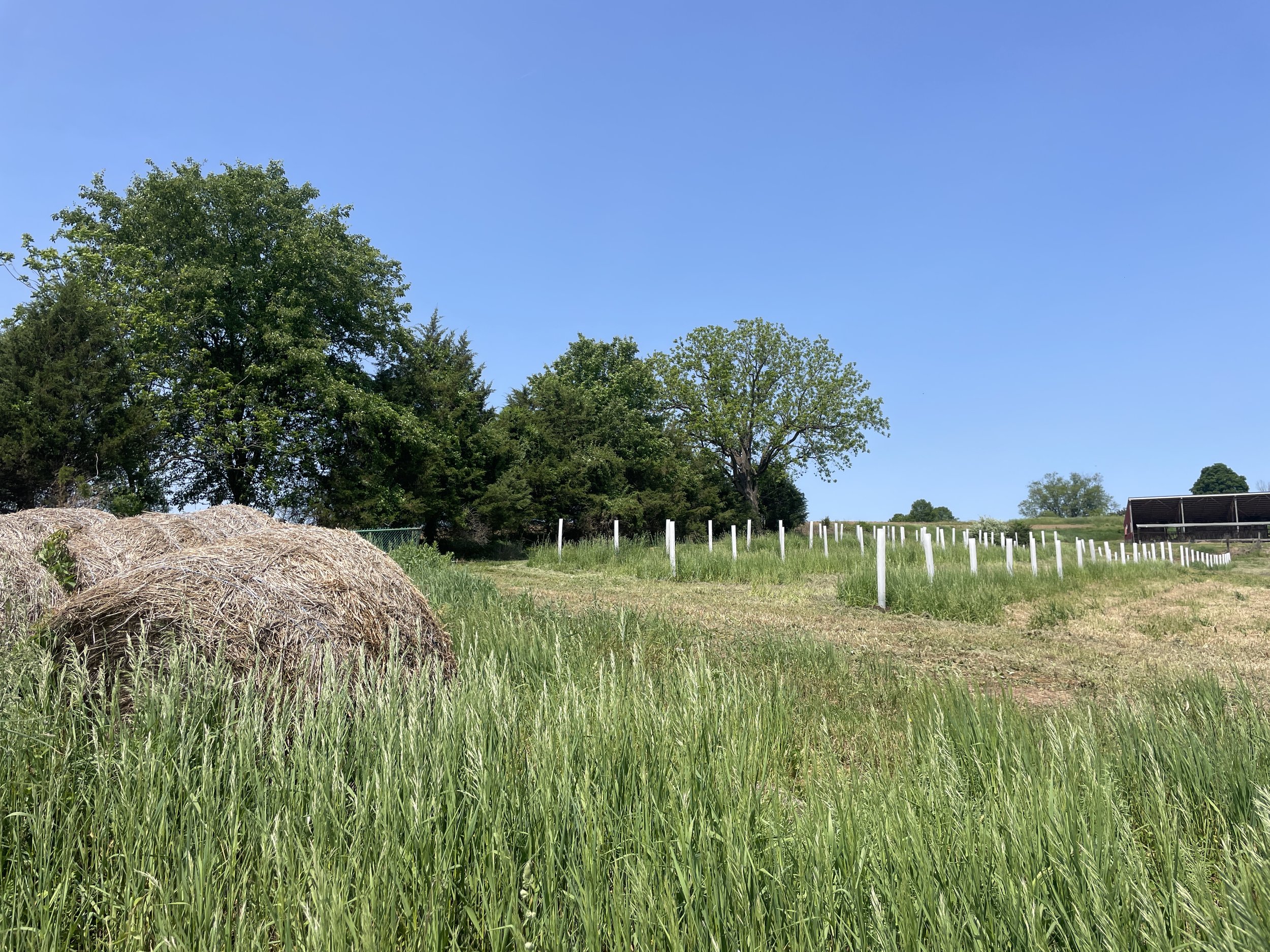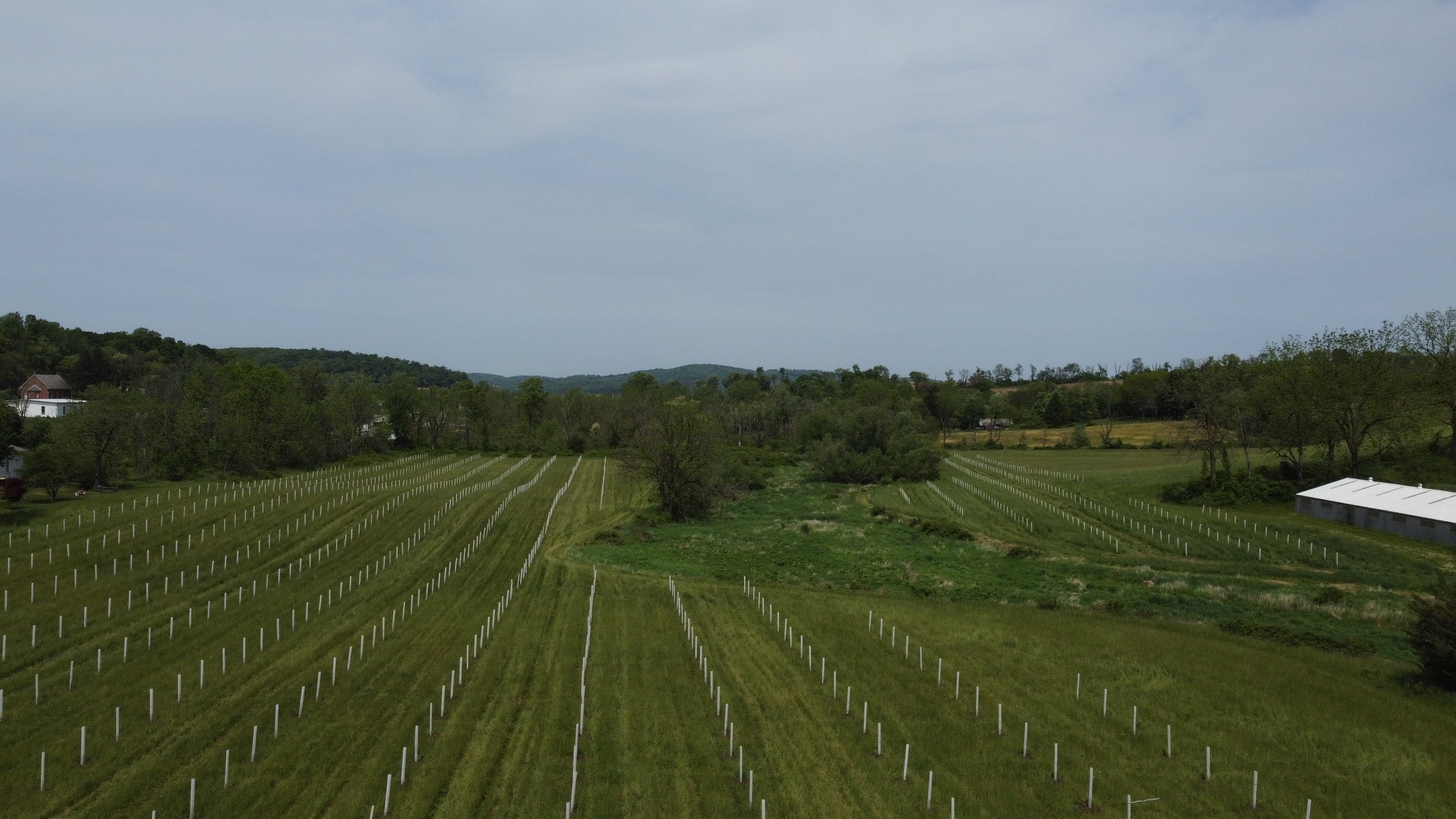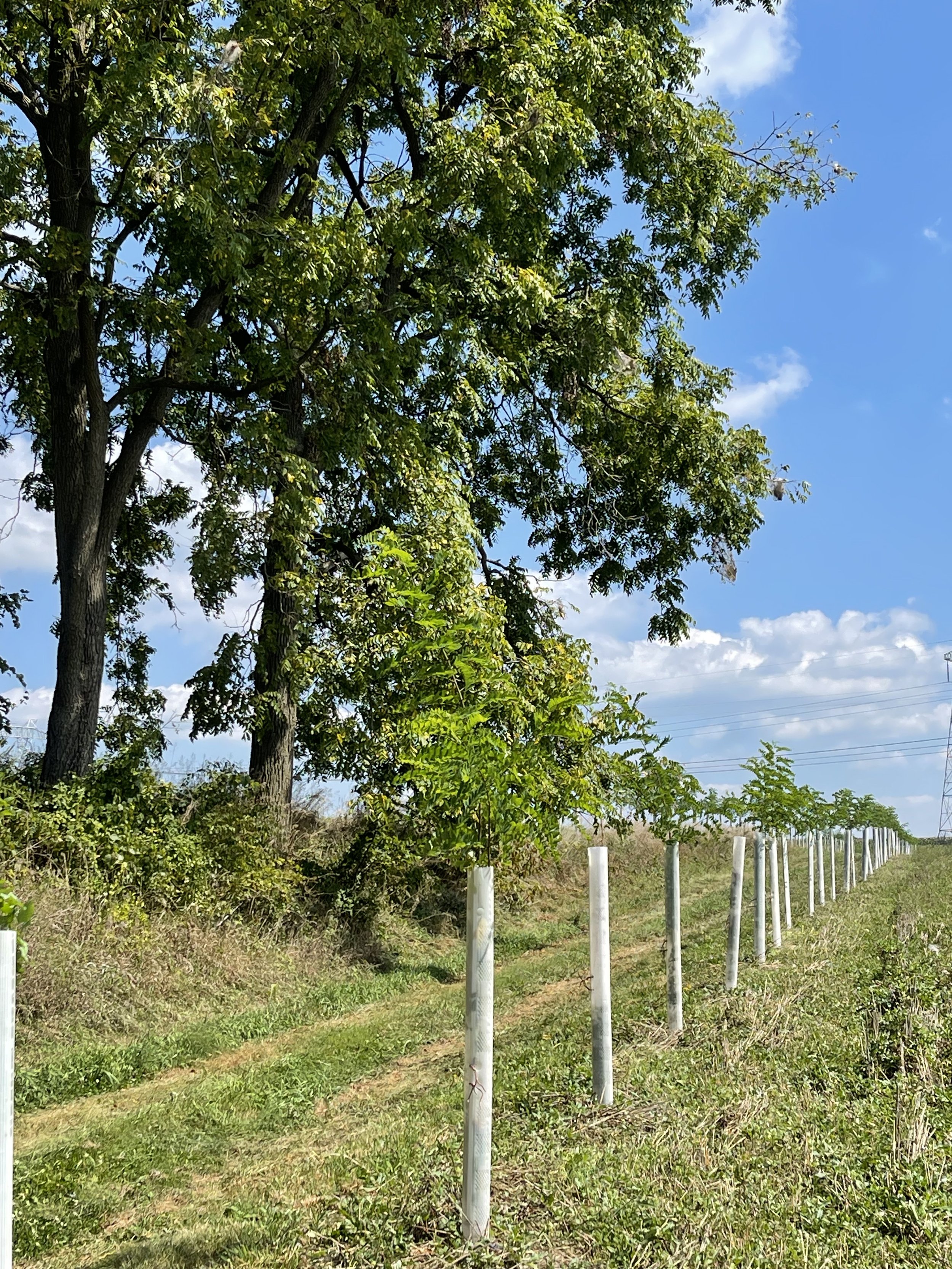
Private-Public Partnerships for Water Quality
Featuring: Wild Fox Farm
Cultivating Regional Partnerships to Scale Working Buffers
Agroforestry creates a multitude of benefits for landowners. However, finding project partners to implement the project end-to-end with high tree survivorship can be difficult.
Farmer-Centered Approaches to Water Quality
Today’s water quality crises demand scalable, collaborative solutions that balance farmer and landowner needs with environmental quality.
Working buffers — or revenue-generating riparian zones — are one approach piloted by Propagate in partnership with Stroud Water Research Center.
The project enabled the planting of nearly 20,000 trees across 3 farms in Eastern Pennsylvania — a small but important step towards reducing agricultural runoff in the Chesapeake Bay, which amounts to over 300 million lbs annually.
Why Working Buffers?
By integrating income-generating species such as fruit, nut, or timber products into traditional riparian buffers, working buffers offer economic value alongside ecological benefits. This, in turn, increases farmer engagement and the likelihood for successful tree and shrub establishment.
The strength of working buffers is their multi-functionality: They stabilize soil, filter pollutants, absorb excess nutrients, cool waterways, and support biodiversity, all while diversifying a farm’s yield across multiple revenue streams. In addition to saleable products, working buffers can provide shade and fodder for grazing animals and capitalize on wet, hilly or otherwise unproductive land ill-suited to row crops.
Benefits
🌊 Runoff reductions
☔️ Stormwater Management
🐝 Biodiversity
🧑🌾 Revenue Diversification
♻️ Low operating costs
Overcoming Barriers to Adoption
“Removing acreage from production and investing in a new commodity can be risky,” said Wills Curley of Stroud Water Research Center. “Between juggling time and resources and avoiding burnout, growers are limited in their ability to experiment with new crops and practices.”
That said, he noted that there seems to be momentum among young innovative farmers interested in trialing working buffers, but that these farmers may need technical support and financing to get started.
To this end, Propagate and Stroud formed a strategic partnership to de-risk working buffers for growers in the Delaware River Watershed.

Phase 1: Partnerships & Financing
While Stroud brought a strong working knowledge of riparian buffer restoration and local ecology to the partnership, the Propagate team layered economic analysis into buffer design, leveraging Overyield to support suitability analysis, species selection, and scenario modeling.
Together, Propagate and Stroud worked to recruit the right partners to support buffer development. This included technical service providers like Trees for Graziers and Trout Unlimited, genetic partners such as Rutgers University, a handful of innovative farmers, and of course financing partners.
Financing water quality solutions can be difficult, as funding priorities can vary from state to state and from conservation district to conservation district. Prevailing practices like cover cropping are often favored over newer concepts like working buffers. To resolve these funding gaps and make capital access easy for growers, Propagate and Stroud assembled an array of both public and private funders, including Pennsylvania’s Department of Conservation and Natural Resources, PA’s Oil and Gas Lease Fund, and the William Penn Foundation.
With these pieces in place, the next step was system design.

Propagate helped us land on Rutger’s Hazelnuts, which are self-shedding, regionally-bred, and shelf-stable. The cultivar has only been commercially available for a few seasons, so we’re kind of on the forefront of their production.”
“
— Ben Davies, Wild Fox Farm
To design best-fit buffer systems, Propagate examined each farm’s holistic context and goals, using Overyield to align these goals with climate, topography, suitability, infrastructure, water, utilities, market access, and more.
The design process for each farm was iterative, but ultimately hinged on the needs and goals of each farm family.
Phase 2: Solution design
At Wild Fox Farm, a vegetable and hemp farm based in Berks County, PA, owners Ben and Karah Davies wanted to diversify their operations through tree crops, but were hesitant to overcommit to a time and labor-intensive crop.
Propagate helped them access a novel cultivar of European Hazelnut — a low-maintenance and flooding-tolerant crop well-suited to their alluvial soils and preference for storage crops.
At another pilot farm situated on 110 acres in Shillington, PA, the older generation’s desire to keep land in corn, hay and pasture was balanced with the younger generation’s desire to diversify operations.
Propagate and the farmer partners landed on a design that leveraged sub-prime and unused acreage, identifying commercial nut species well-suited to hilly terrain and marginal soils.
The specific cultivar of Hazelnut planted on these farms is among the few in existence with resistance to eastern filbert blight – a fungal pathogen that has till now prevented the commercialization of hazelnut in the Eastern US. Through a partnership with Rutgers University, Propagate helped Wild Fox and Rosy Meadows access these cultivars, which represent a culmination of 20+ years of breeding work.

We know what the landscape should look like, and the biodiversity that should be there, but the economics of these native or hybridized native species is uncharted territory. It was cool to collaborate with a company that understands more of the economics and marketplace of ‘working buffers’ and the business side of a farmer giving up acreage.”
“
— Wills Curley , Stroud
Once designs were finalized, Propagate and Stroud facilitated development:
1. Procurement of necessary materials, including nursery stock, tree tubes, and soil amendments, taking care to ensure materials met USDA Certified Organic standards when needed.
2. Site prep, which differed depending on the buffer zone’s proximity to streams, the species selected, and production scale.
3. Planting led by Propagate’s Farm Services team, Stroud, and other on-the-ground partners including Trees for Graziers and Trout Unlimited.
Phase 3: Genetics, Site Prep, & Installation
👩🌾 3 farms 🚜 53 acres 🌳 18,060 trees
Planted Buffers Include
🫐 Hazelnut and elderberry: native + hybridized species well-suited to riparian areas.
🌰 Chinese chestnut: yields well on sloped, marginal land, reducing erosion in sensitive areas.
🐮 Native willow and mulberry: fodder stands for grazing animals.
🪵 Black Locust: native fast-timber
🌳 Silvopasture mixtures: increase animal weight gain via shade and calorie provision

Propagate and Stroud handled everything. From our perspective, and from a farmer's perspective, that’s pretty awesome, because a lot of farmers don’t have the time or bandwidth to invest in something like working buffers, which can take months and months– all kinds of communications, emails, and documents. It was really great to have this kind of white-glove concierge relationship.”
“
-Ben Davies, Wild Fox Farm
What’s Next: Scaling Working Buffers
What’s clear: technical service providers can play an important role in de-risking new practices like working buffers for farmers and farmland owners.
However, to move working buffers beyond their “proof of concept” mode, additional financing is needed to support farmland transitions. Long-term studies to validate the environmental and economic impacts of working buffers is also needed.
Education and awareness among farmers and at the municipal level will help shift conservation funding priorities and adoption rates.
Want to learn more?
Propagate makes it easy for farmland owners to design, plant, and manage agroforestry systems so that they can increase the cash yield of farmland. We can help you design and deploy water quality solutions or other impact investments that fit your budget and goals.
You can learn about our partners and their projects via their social media:
Stroud Water Research Center (Website; Instagram) • Wild Fox Farm (Website, Instagram) • William Penn Foundation (Website) • PA DCNR (Website) • Trees for Graziers (Website, Instagram) • Trout Unlimited (Website, Instagram).











